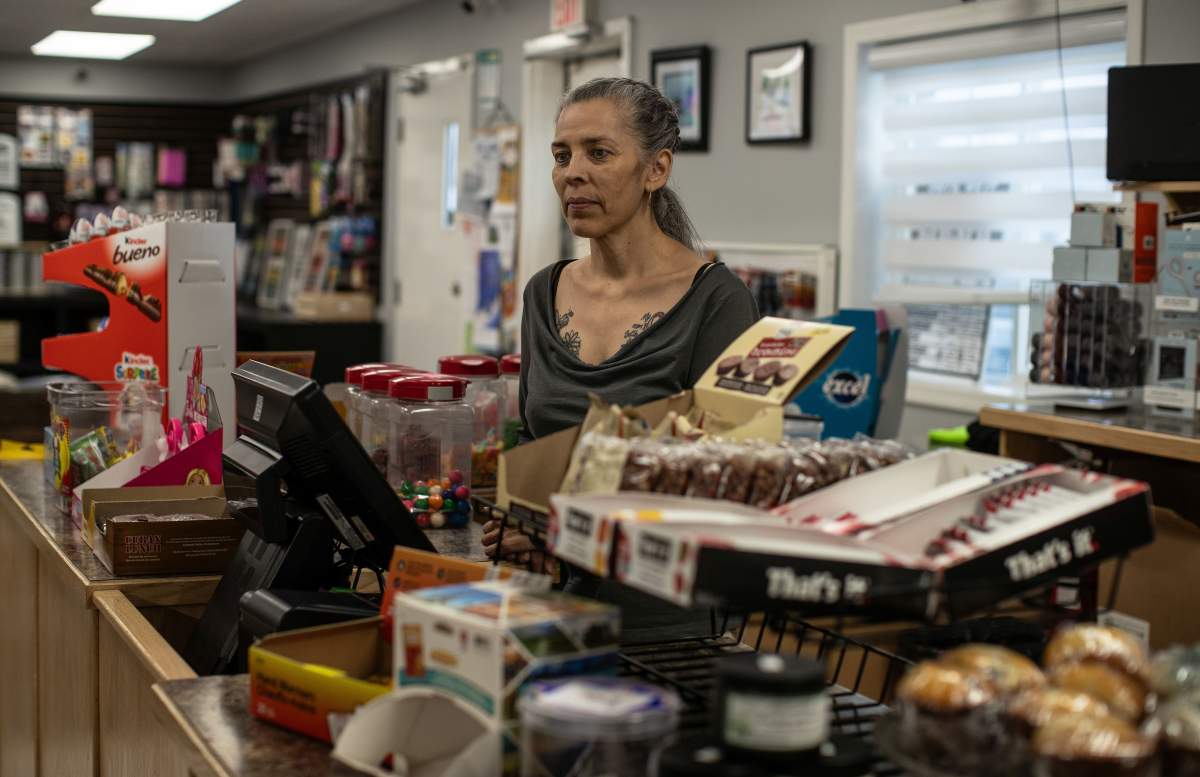Northerners jump on small charter planes like people in the South would into taxis or buses, says the co-owner of Aunty’s Korner Store in Fort Smith, N.W.T., where residents have been gathering to talk about a deadly crash earlier this week.

“It’s a way of life to get from community to community, because in the region I’m from there are communities that don’t have roads so you have to fly in there with smaller planes,” Darlene Sibbeston told The Canadian Press.
On Tuesday morning, a charter plane had just taken off from Fort Smith, a town of roughly 2,200 on the Alberta boundary, and was en route to the Diavik Diamond Mine, some 300 kilometres northeast of Yellowknife, when it hit the ground and caught fire.
Four passengers and two crew members died. One mine worker survived and was airlifted to hospital in Yellowknife.

The Transportation Safety Board has released photos of the crash site showing the plane severely damaged, its fuselage tattered, lying in a heavily wooded area just west of town.
Sibbeston is originally from the village of Fort Simpson, some 700 kilometres northwest of Fort Smith, where air commuting is even more common than in her current town.
“You have winter roads but in the summer you have to fly.”

Get daily National news
Tuesday’s crash brought back terrifying memories of a flight she took in November of 2021.
She was leaving Yellowknife and bound for Fort Simpson, where she was living at the time.
“It’s about an hour-and-a-half flight and we ran out of fuel,” said Sibbeston, who said the plane ended up in a marshy area.
“I’m here today. Everybody survived. It was pretty scary and in my chest right now I can feel it … when I talk about it … so there was points that kind of triggered that trauma.”
Fatal plane crashes have been on a downward trend in Canada over the past decade. In 2022, there were 24 fatal accidents involving Canadian-registered aircraft in Canadian airspace, compared to 42 in 2012, said the Transportation Safety Board. The number of air travellers killed decreased to 34 from 63 within the same period.

Longtime Fort Smith resident Kevin Antoniak said he flies regularly.
“If you flew in and out of Fort Smith in the last 20 years, that type of plane would be the one you flew in,” he said of the British Aerospace Jetstream that crashed this week.
“I’m a good flyer, but you got to think that the planes are all federally inspected, maintained and everything else.”
Antoniak said the planes are essential for those with medical needs, as it takes much longer to drive.
“It’s like taking the bus,” he said.
“You can drive, but it’s easier for me if I can jump on the plane in the morning, fly up there (to Yellowknife) in 47 minutes, land, go to the hospital and get my blood checked and then be home for 5 p.m.”
- Hundreds of public sector workers warned their jobs could be cut: union
- Carney, Trump and Sheinbaum talk trade in Washington at FIFA World Cup draw
- Health Canada recalls glucose monitors that may give ‘incorrect’ readings
- Colleen Jones remembered: Funeral, celebration of life honours famed curler, broadcaster
Chris Sigurdson, a criminal defence lawyer in Winnipeg, has been taking small planes — often eight-seaters — to work in remote northern Manitoba communities on the court circuit for more than 20 years. He’s never been involved in a crash, and his scary moments have been memorable but few.
He recalls a hailstorm that had the plane bouncing around in strong winds like a ping-pong ball.
“The plane was bouncing back and forth quite dramatically and people were throwing up all around me,” he said.
“We fell, I think it was 500 feet (more than 150 metres), like a rock before we stabilized again.”
Even his first circuit-court flight, to the fly-in community of St. Theresa Point, made an impression.
“We get there and the plane starts circling before landing, and we’re told that we can’t land until they clear the wreckage of the plane that crashed ahead of us.”
There were no injuries in that crash, he added.
More than two decades later, Sigurdson is still flying. His travels sometimes include short rides in a helicopter, which he likes less, calling it a “chair in the sky.”
He’s even taken a hovercraft that connects two First Nations communities over a frozen lake.
“I’ve been doing it for 23 years, and there’s only been two or three times that have been in any way really scary like that. There’s more that are just unpleasant but nothing that’s really dramatic,” he said.
–with files from The Canadian Press’ Steve Lambert Jeremy Simes







Comments